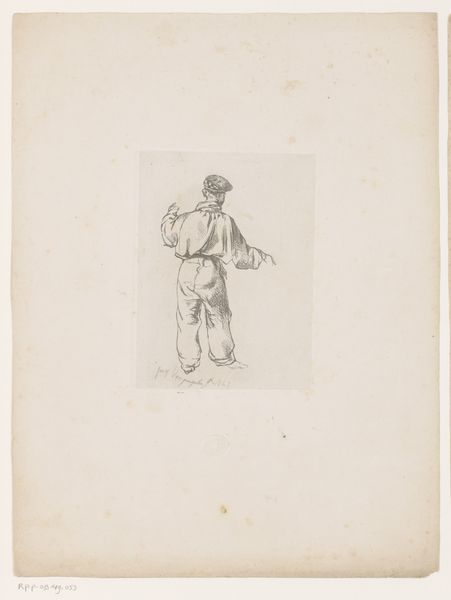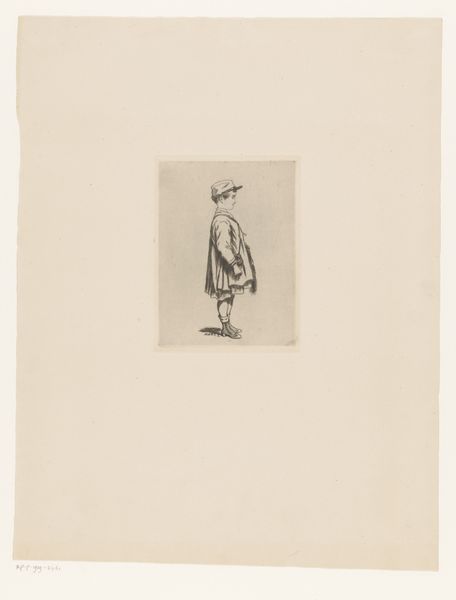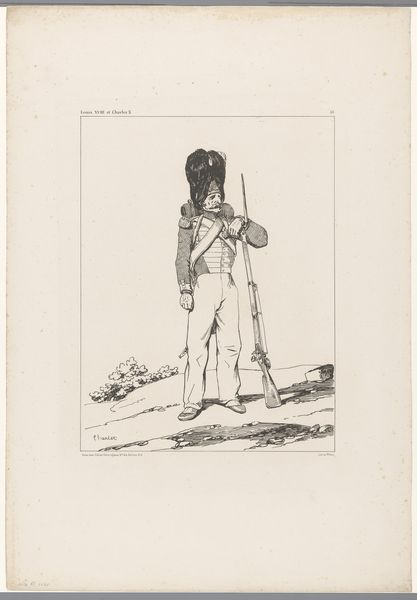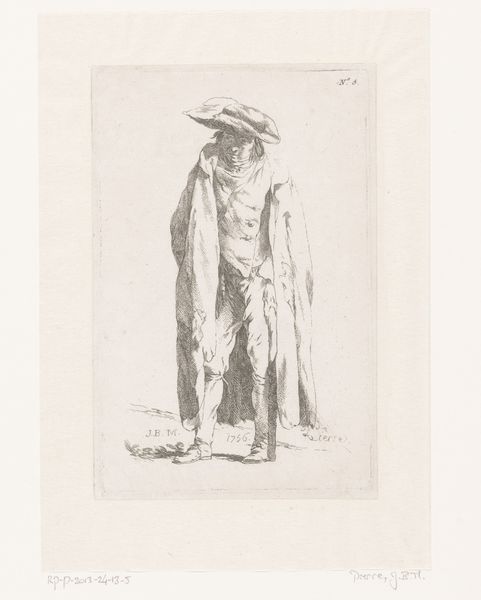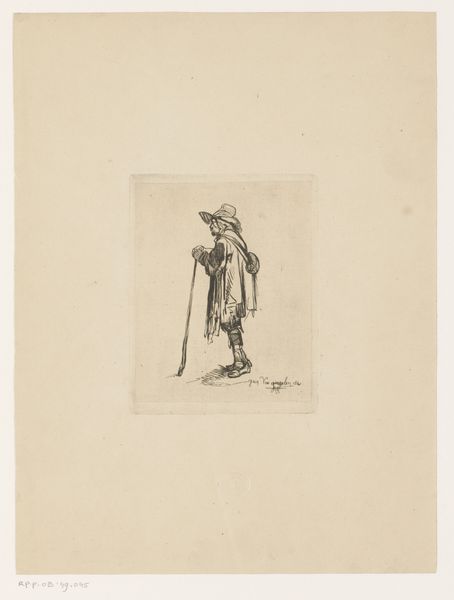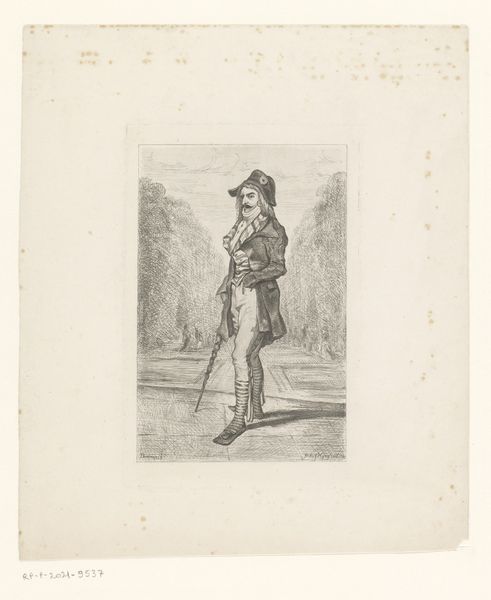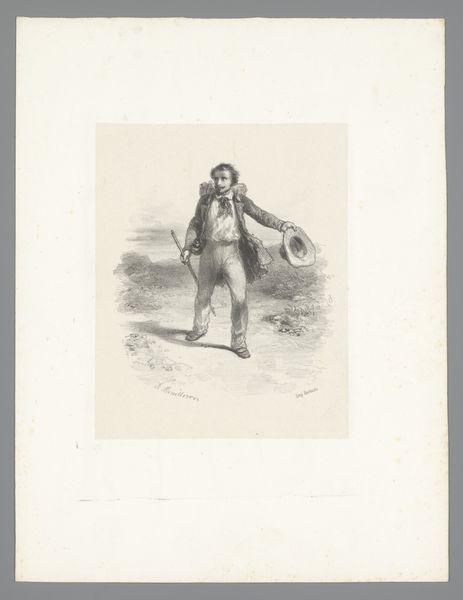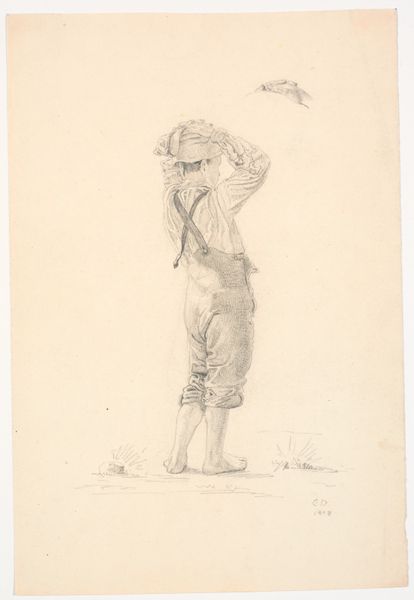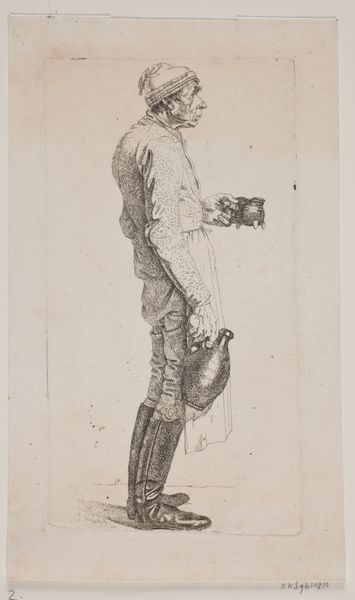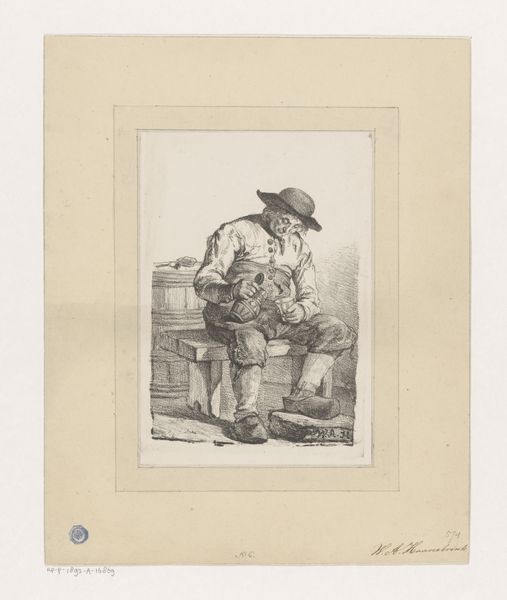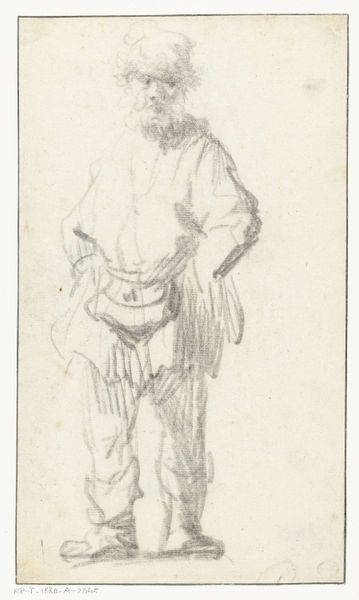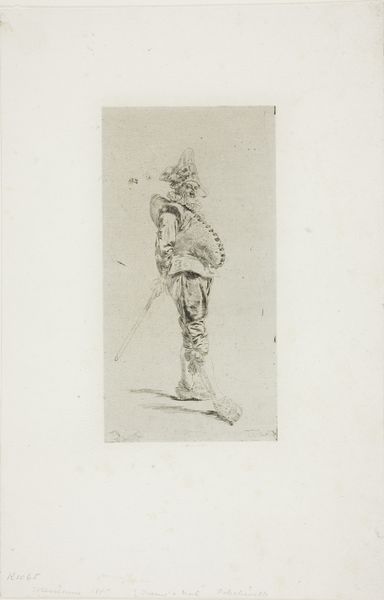
drawing, pencil
#
drawing
#
pencil sketch
#
landscape
#
figuration
#
pencil
#
genre-painting
#
realism
Dimensions: height 380 mm, width 269 mm
Copyright: Rijks Museum: Open Domain
Editor: This is "Boy Pulling a Load" by Anton Mauve, made sometime between 1848 and 1888. It's a pencil drawing, currently held at the Rijksmuseum. I'm struck by the boy's downcast gaze, and the overall sense of quiet labor the image conveys. What do you see in this piece? Curator: I see the enduring symbol of youth burdened by work, an image potent with both social commentary and psychological weight. The figure, though simply rendered in pencil, evokes a universal narrative of hardship and resilience. Notice how Mauve uses line and shadow not merely to depict, but to suggest the weight, both physical and emotional, borne by this young boy. The hat casts a shadow, partially hiding his face, does that conceal or protect? Editor: That's a fascinating point. I hadn't considered the idea of protection. The hidden face definitely adds to the emotional depth, perhaps suggesting vulnerability as much as anonymity. Is that common in the imagery of the time? Curator: Yes, masking or veiling a subject was a common symbolic tool. Think of how frequently female figures are depicted with lowered eyes or draped heads. It adds to the mystery and invites deeper contemplation. The act of "pulling a load" is primal. We understand intuitively that this figure performs that action over and over. In a cultural context, how does this resonate across social classes, across generations? Editor: That really changes how I see the drawing. It's no longer just a snapshot, but something that speaks to broader societal issues. I guess, it makes you consider your own place in all that too. Curator: Exactly. Art holds a mirror to society, and reveals our own roles. Understanding visual language equips us to dissect not only history, but also our own psychological landscapes. The "Boy Pulling a Load" isn’t just about the 19th century; it’s about the human condition across time. Editor: I'll definitely remember that. I’m so much more aware of how cultural memory lives within this art.
Comments
No comments
Be the first to comment and join the conversation on the ultimate creative platform.
